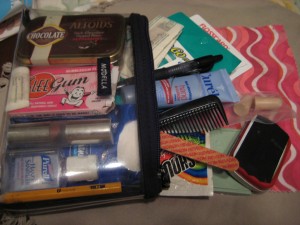“In the Woods” by Tana French
January 29th, 2011I get the title of Tana French’s debut mystery novel, In the Woods, confused with that of the Sondheim musical, Into the Woods. So forgive me if I type the wrong preposition when writing about French’s novel, which I recently read for the second time. I tore through it the first time, and I tore through it this time, with an added appreciation for the clues and red herrings sprinkled throughout the book as it weaves together two mysteries, a child murder in the present with a case where two kids went missing in the past.
I’m not giving anything away that isn’t on the back cover or in the first pages. The narrator is Rob Ryan, a detective on the (fictitious) Dublin murder squad in Ireland. I was happy to suspend my disbelief when Rob and his partner Cassie Maddox happened to get the call for a murdered girl in the suburb of Knocknaree, the town where two other kids went missing twenty years before. Those two kids went into the woods with a friend. He was found later; they never were. The friend who was found? Adam (Robert) Ryan, the narrator.
What I warn you to remember is that I am a detective. Our relationship with truth is fundamental but cracked, refracting confusingly like fragmented glass. It is the core of our careers, the endgame of every move we make, and we pursue it with strategies painstakingly constructed of lies and concealment and every variation on deception…
This is my job, and you don’t go into it–or, if you do, you don’t last–without some natural affinity for its priorities and demands. What I am telling you, before you begin my story, is this–two things: I crave truth. And I lie.
Rob is smart, charming, and completely messed in the head (understandably) from what happened when he was a child. Whether he’s exactly the right or wrong detective to investigate the new mystery makes for fabulous, devour-able fiction. Well plotted and paced with excellent, complex, psychological characterizations, this was a thumping good read, even when I knew whodunnit. (I am amused that, without referring to my old entry, I chose the exact same quote as I did over two years ago when I read the book for the first time. Perhaps because it just cries out to be quoted.)
Edited to add: In interviews, French says she’s a fan of complex mysteries, like Donna Tartt’s Secret History and Dennis Lehane’s Mystic River. Not all plot points are tied up neatly and satisfactorily. I was reminded of some of the books of Margaret Atwood, in which the author challenges the reader to decide and imagine for herself what might have happened. A lot of people were outraged that all the mysteries weren’t explained. I found this provocative in a good way.

